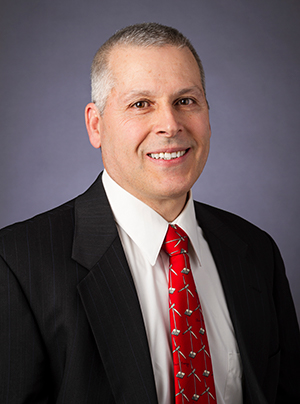Secured Creditor Protections Supported by Lender Environmental Policies
Financial institutions lend monies to borrowers for a wide variety of reasons, with the expectation that the borrower’s ability to repay the loan is supported. However, with the growth in environmental awareness and environmental regulations, commercial property borrowers pose new challenges to lender institutions. A potential environmental liability from past ‘historic’ releases and/or new changes in a property’s environmental condition has become another area of concern for lenders in the evaluation of loan applications.
To address these concerns, environmental insurance tailored to lenders is a growing area of support useful to protect the performance of property loan portfolios.
Numerous Federal regulations govern the environmental responsibility of property owners. One such early regulation, the Comprehensive Environmental Response, Compensation, and Liability Act, (CERCLA) more commonly known as Superfund, was passed in 1980.

Superfund’s regulatory provisions provided the U.S. EPA the authority to respond to human and environmental hazards by allowing the EPA to choose either enforcement, i.e. requiring owners to address a hazard immediately themselves or, for the EPA to conduct a cleanup itself and subsequently seek reimbursement for cleanup costs from liable parties. This ability to seek reimbursement provides strong leverage for the EPA to convince property owners to quickly engage in the steps needed, or face potentially higher costs by allowing the EPA to lead work they deem necessary.
Further, CERCLA’s statutory language allowed the EPA to cast a wide net for addressing these environmental liabilities through “strict”, and “joint and several” provisions in which any and all parties operating or owning a contaminated property could be looked at to bear the full costs associated in remediating an environmental hazard. This resulted in many cases in the 1980s and early 1990s in which the liabilities of a bankrupt property owner fell back onto the lending institution. An environmental liability could exceed the loan amount and resulted in painful loan portfolio losses during these years.
Recognizing the need to provide a financial institution protections when lending on older, potentially environmental suspect properties, Congress passed the Asset Conservation, Lender Liability, and Deposit Insurance Protection Act (Asset Conservation Act) in 1996, strengthening and clarifying safe harbor provisions in CERCLA. Specifically, the provisions focus on protections for a “person, who, without participating in the management of a ... facility, holds indicia of ownership primarily to protect his security interest in the ... facility. Source:EPA - CERCLA Lender Liability Exemption: Updated Questions and Answers
Through subsequent regulatory guidance, legal decisions and more, the Asset Conservation Act has further strengthened protection for lenders who follow specific requirements to maintain an arms-length relationship with a borrower’s property.
“Indicia of ownership” is a wide-ranging term encompassing various financial lending instruments. Perhaps the most basic example of indicia of ownership is a bank’s mortgage on a property. It can also be similar to a bill, note, or bond; which in finance simply defines a length of time for a financing instrument with repayment options determined by the parties involved. Similarly, a mortgage can be a traditional 30-year, adjustable, balloon, or a mix of these and other financing structures. Then, similar to as when a bank records a homeowner’s mortgage, recording the financial lending instrument used between the borrower and lender results in the lender then becoming a "secured creditor" with the property securing the interest of the lender.
As the EPA states however, a secured creditor simply holding a mortgage or indicia or ownership is not sufficient protection for a lender to avoid an environmental liability. Also included in the EPA guidance is the requirement that a lender must not participate in “management of a ... facility”.
Meeting both of these conditions, indicia or ownership and not managing a facility, can provide significant protection against a lender being pulled into potentially costly remediation projects. Even though the costs associated with many remediation projects continue to exceed the value of the land and associated improvements across the U.S., thankfully, and true to the intent of the Asset Conservation Act, lenders exercising proper due diligence are providing financing on properties commonly known as brownfields. Today, lenders have become much more sophisticated in their due diligence efforts as the economics of any potential deal need to make sense for all involved. The Asset Conservation Act allows many more properties to be redeveloped because of the protections afforded.
Independently, environmental regulators are tasked with the difficult role of helping society return environmentally damaged properties back into productive use while also ensuring that remediation measures taken on a contaminated property are protective of both humans and the surrounding environment.
As a result and unsurprisingly, lenders meeting the requirements of being a secured creditor and refraining from management of a facility still need to be concerned with a property’s environmental condition. Some environmental concerns that can still impact a lender include:
- Historic property use:
- Past operations may have impacted the condition of a property through releases to the environment that are no longer allowed but that still pose residual risks to humans and/or the environment. Often, these conditions may be unknown. A facility expansion or renovation may uncover existing historic impacts that require costly remediation.
- Current environmental projects:
- If a property is undergoing environmental remediation, costs can be significant and expand through cost overruns. Remediation projects can impact a borrower’s cash flow reducing a borrower’s ability to maintain payments to a lender.
- Existing environmental permits:
- Statutory protections afforded a lender do not permit a lender to block ongoing expenditures needed to maintain existing permits. Both wastewater discharge and air emission permits typically require monitoring and treatment to a set of permitted concentrations. If a lender forecloses on a property, decisions and associated costs on operating permits must be made. Secured creditor protections do not allow a lender to block required expenditures to prevent a hazardous, permit exceedance.
- Diminution in value:
- Property values are negatively impacted by proximity to brownfields. Researchers from the University of Cincinnati’s School of Planning had shown a significant decrease in property values for properties located within 2000 feet of a brownfield, with those located closest to a brownfield displaying the greatest reduction in value. Lenders need to understand the potential for surrounding brownfields to adversely impact the value of a property they may have a security position on.
These and other concerns can be addressed by an environmental insurance policy. A growing segment of environmental insurance is the lender policy which specifically focuses on the needs of a lender, not the borrower. As such, these policies do not provide coverage for a borrower, but rather, are for the lender with security on an underlying property.
Lender policies such as Great American's Premises Environmental Liability Insurance – Commercial Lenders policy are geared towards providing a lender with the coverage most important to them—protection focused on repayment of an outstanding loan balance.
Lenders should check with counsel whenever decisions are being made on obtaining and maintaining the protections against environmental liabilities afforded under the Asset Conservation Act as secured creditors. Subsequent risk transfer insurance decisions such as obtaining a Commercial Lenders policy should be made with guidance from a licensed broker. Finally, regulators have made great strides in working with the business community to re-introduce formerly distressed brownfields back into productive uses. The results have generated jobs and tax income for host communities while also protecting the surrounding community and environment.

Interested in learning more about Lender product? Check out Eric Fernandes’ and Ed Jarosz’s articles in this issue!


Paul Scian
Paul is a Loss Control Manager with Great American’s Environmental Division. He brings over 30 years of environmental and insurance consulting experience to Great American. Paul’s background includes hydrogeology and finance degrees with extensive experience in greenfield, water supply development and brownfield redevelopment. He provides technical support and training to our underwriters and is based out of our New York office.